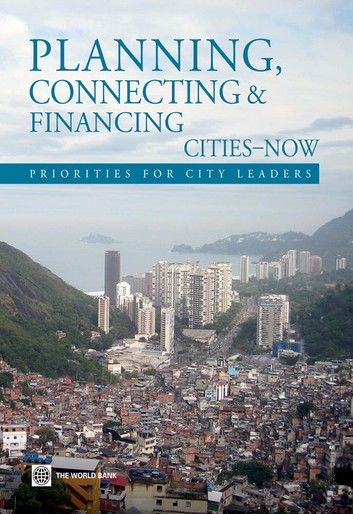| FindBook |
有 1 項符合
Planning, Connecting, and Financing Cities — Now的圖書 |
 |
Planning, Connecting, and Financing Cities — Now 作者:The World Bank 出版社:World Bank Publications 出版日期:2013-01-21 語言:英文 |
| 圖書館借閱 |
| 國家圖書館 | 全國圖書書目資訊網 | 國立公共資訊圖書館 | 電子書服務平台 | MetaCat 跨館整合查詢 |
| 臺北市立圖書館 | 新北市立圖書館 | 基隆市公共圖書館 | 桃園市立圖書館 | 新竹縣公共圖書館 |
| 苗栗縣立圖書館 | 臺中市立圖書館 | 彰化縣公共圖書館 | 南投縣文化局 | 雲林縣公共圖書館 |
| 嘉義縣圖書館 | 臺南市立圖書館 | 高雄市立圖書館 | 屏東縣公共圖書館 | 宜蘭縣公共圖書館 |
| 花蓮縣文化局 | 臺東縣文化處 |
|
|
圖書介紹 - 資料來源:樂天KOBO 評分:
圖書名稱:Planning, Connecting, and Financing Cities — Now
This report provides Mayors and other policymakers with a policy framework and diagnostic tools to anticipate and implement strategies that can avoid their cities from locking into irreversible physical and social structures. At the core of the policy framework are the three main dimensions of urban development. • Planning— where the focus is on making land transactions easier, and making land use regulations more responsive to emerging needs especially to coordinate land use planning with infrastructure, natural resource management, and risks from hazards; • Connecting—where the focus is on making a city’s markets (for labor, goods, and services) more accessible to neighborhoods in the city and to other cities. Here the focus is also on investing in public transport, and pricing private transport fully; and • Financing— where the focus is on how a city can leverage its own assets to finance new assets for example, through land value capture, establishing creditworthiness for local governments and utilities to access domestic debt and bond markets and how to set clear and consistent rules to attract private investors to create jobs in cities. This report also distills lessons from prototypes urbanization diagnostics which have been piloted to reflect challenges for countries at nascent (Uganda, Vietnam), intermediate (China, India, Indonesia), and mature (Brazil, Colombia, South Korea, Turkey) urbanization. These diagnostics under the World Bank's Urbanization Review program have engaged strategic counterparts, such as those in national ministries of finance and planning, in thinking about policy choices that influence urbanization and city development.
|











